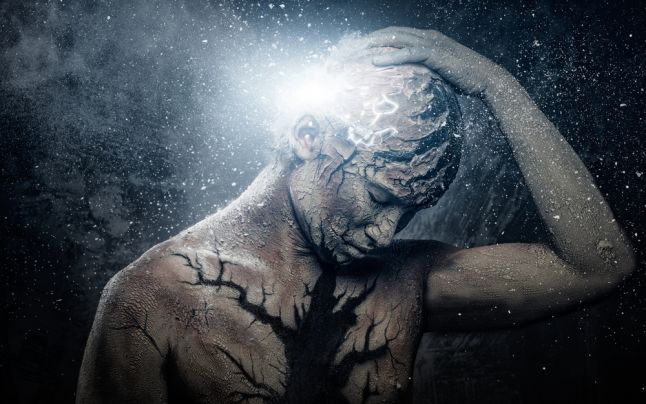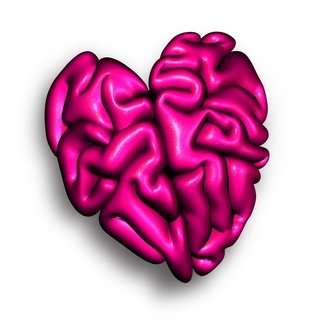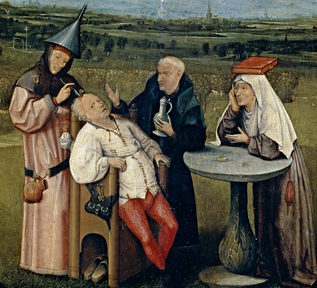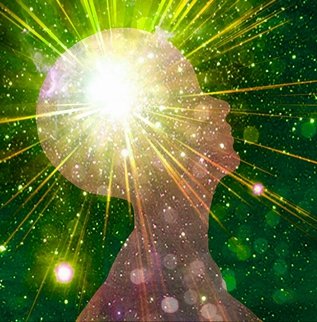
Containing about 100 billion neurons, the brain is the most complex structure of the human body. Each neuron can create at least 1,000 links so that in a brain there may be 100,000,000,000,000 neural connections. Also, brain neurons can transmit up to 1,000 electrical signals every second, the speed at which these pulses are moving is sometimes 400 kilometers per hour.
From thinking, talking and loving to breathing, singing or running, every action we take is due to these interconnected nerve cells. The brain is always active, even when we sleep. That's why about 20% of the energy we get from food is used by the brain, the body that is the largest resource consumer, despite the fact that it represents only 2% of the total weight of our body.
Human brain mysteries have fascinated humanity since the early years of human civilization. The first written mention of this organ dates back 6,000 years ago, reminiscent of a text in which an unknown author from Sumeria described the euphoric effects of poppy.
Myths about the brain have been for thousands of years
The difficulty of studying this mysterious organ has, over time, made the brain become the object of many false myths and beliefs. For example, the Egyptians believed that the mind is in the heart of a human being, considering the brain as an unimportant organ. During the mummification process, the brain was simply removed, while other organs were carefully kept and embalmed.

Historical evidence shows that Alcmeon of Crotone, who lived around 500 BCE, was the first person to realize that, after many dissections, thoughts, sensations, and intelligence reside in the brain rather than in the heart as it is thought at that time. Aristotle, who lived in the fourth century BC, continues to argue that the heart is the organ of thought, the brain being just a heart-cooling mechanism. This myth persisted until the second century BC, when Galen, a Roman physician who had many gladiators as patients, noticed that they lost their mental faculties when they suffered headaches.
Galen believed there were four humors in the brain (blood, phlegm, black ball and yellow ball), whose balance was the key to a healthy life. Galen understood the essential role of the brain in terms of memory, emotion and senses, even if it attributed it to non-existent humor.
Galen's ideas have lasted more than a millennium, also supported by the fact that in the Middle Ages church authorities banned dissections on human bodies. This is why physicians often used bizarre remedies such as treading to remove the "crazy stone" from the patient's skull.
![keisnijding-jheronimus-bosch.jpg]
( )
)
Brain mysteries have only begun to be elucidated since the seventeenth century, as scientists have understood, by studying patients with mental problems, that different parts of the brain play distinct roles. Over time, the brain has begun to be studied in several branches of medicine and science, but despite tremendous progress, many myths still exist today.
We use only 10% of the brain?
One of the most widespread myths about the human brain is that people only use it in the proportion of 5% -10%.
Historical studies show that this myth was conceived at the end of the nineteenth century, the assertion being used in various brochures and advertisements that promised potential customers the chance to use the unapproved parts of the brain, becoming clearer and wiser. Another key moment in spreading this false belief about the brain is attributed to Albert Einstein. The legend says a journalist would have asked the scientist what is the secret of his intelligence, and he would have told them that people use only a small part of their brain potential, while he uses a little more. Even though the archives do not confirm that this interview had ever taken place, its legend has allowed the spread of the myth.

Later, this legend was used by the authors of personal development books, promising potential customers the disclosure of secrets that would allow them to use a larger part of the brain. The legend was also taken over by magicians to explain their supposed paranormal powers.
The success of this myth is partly due to people's desire to overcome the limits inherent in the human body. Therefore, it has been used in numerous advertising campaigns that have helped spread this untruth. Hollywood filmmakers did not hesitate to appeal to this legend, underlying Limitless thriller, in which a prodigy-drug allows the protagonist to use 100% of the brain and benefit from concentration and memory capabilities out of the ordinary.
Despite the spread of myth, scientists have explained for decades that it is unlikely to be true: Considering that 20% of body energy is consumed by the brain, it is hard to believe that we use only 10% of its capacities. Natural selection would have led to the disappearance of inefficient beings to feed inactive tissues.
Moreover, research on people who have suffered brain damage (war veterans and mentally ill people) has shown that their abilities and behavior are strongly influenced by traumas, regardless of the affected areas of the brain.
The scientific progress achieved in brain imaging has completely eliminated the possibility that this myth may be true. Using functional magnetic resonance imaging devices (fMRI), researchers have been able to see that people use more than 10% of the brain even when they make trifling gestures like clapping fingers. "Functional imaging has shown us that there are very few elements of the brain that are not activated at any given time," explains Professor Sophie Scott of the University College London's Institute of Cognitive Sciences. Even if we do not use all the parts of the brain at the same time, brain imaging showed that over a 24-hour period people activate all areas of the brain.
An assertion closer to the truth, experts say, is that we only understand 10% of how the brain works.

Congratulations @dan321! You have completed some achievement on Steemit and have been rewarded with new badge(s) :
Click on any badge to view your own Board of Honor on SteemitBoard.
For more information about SteemitBoard, click here
If you no longer want to receive notifications, reply to this comment with the word
STOPDownvoting a post can decrease pending rewards and make it less visible. Common reasons:
Submit